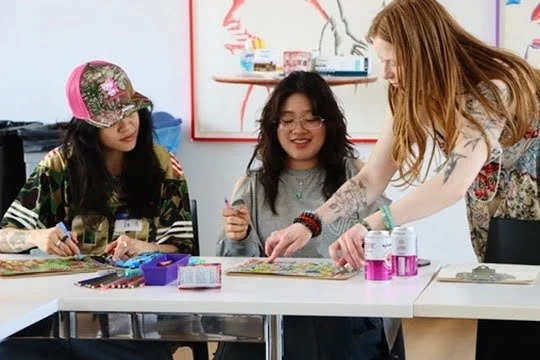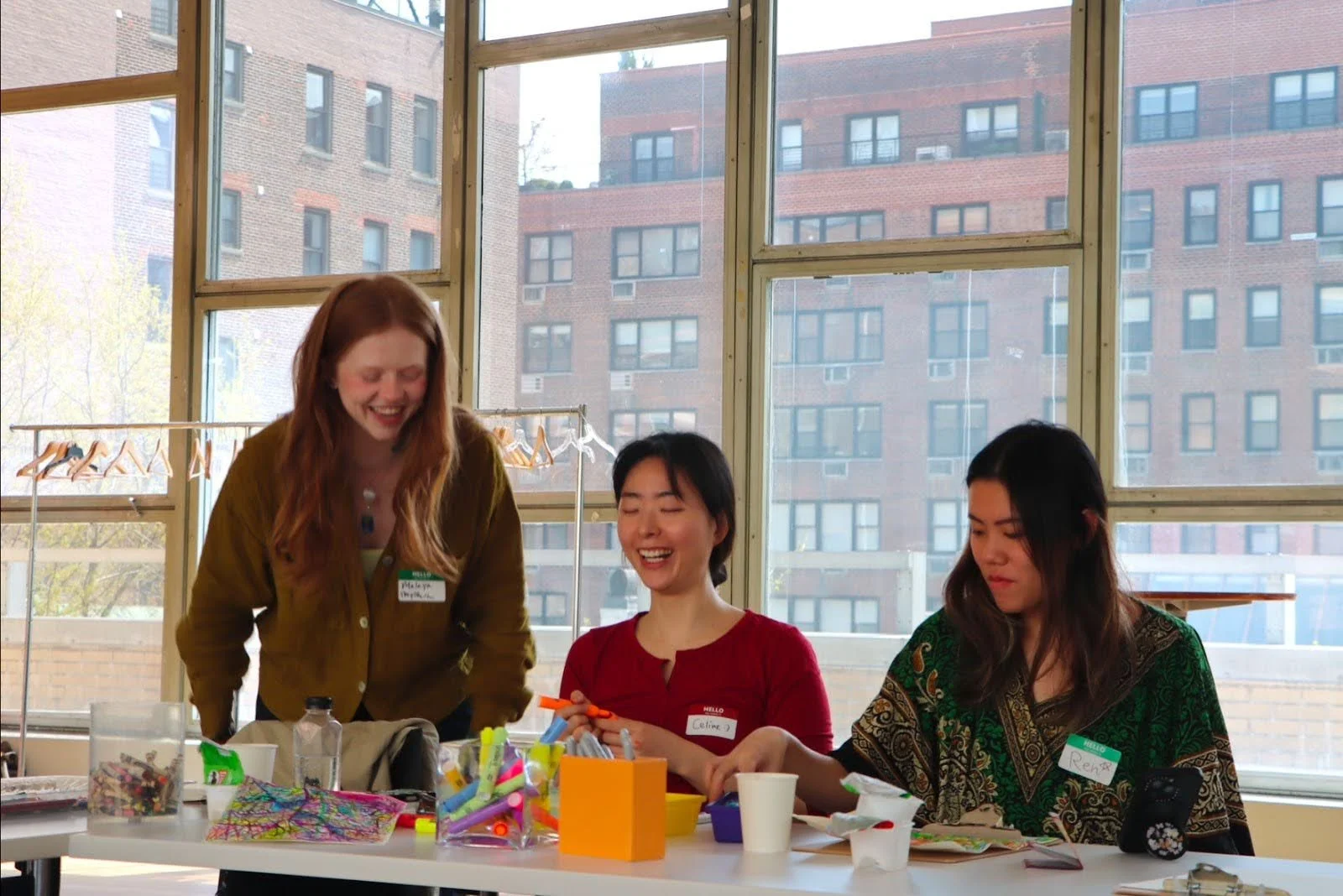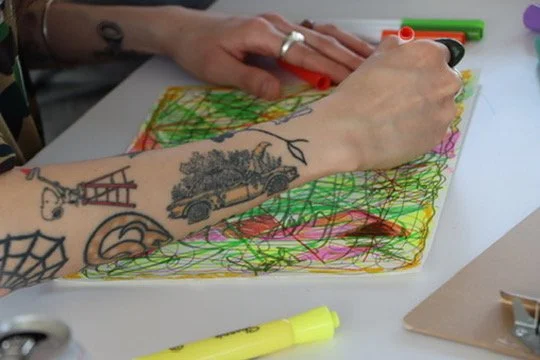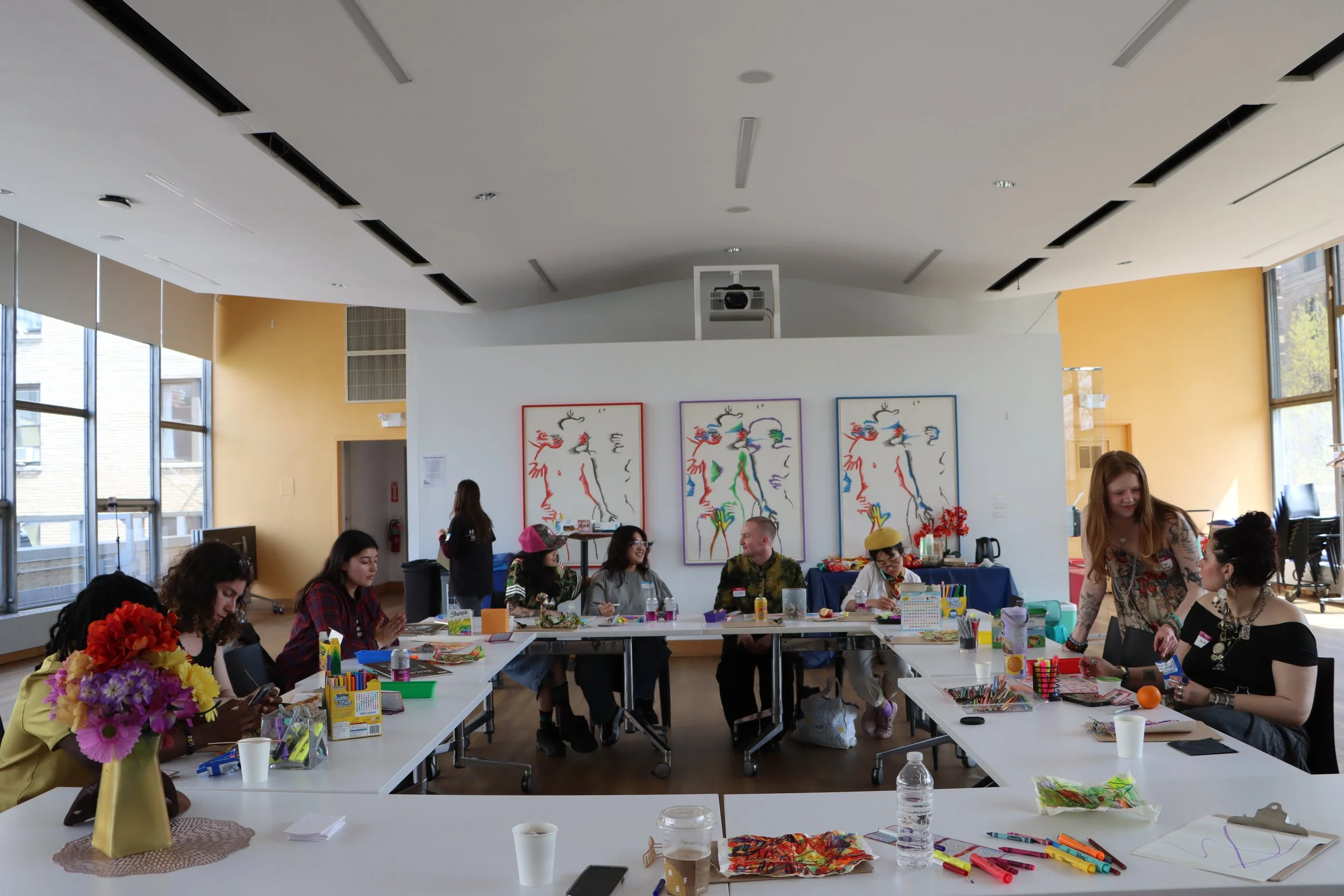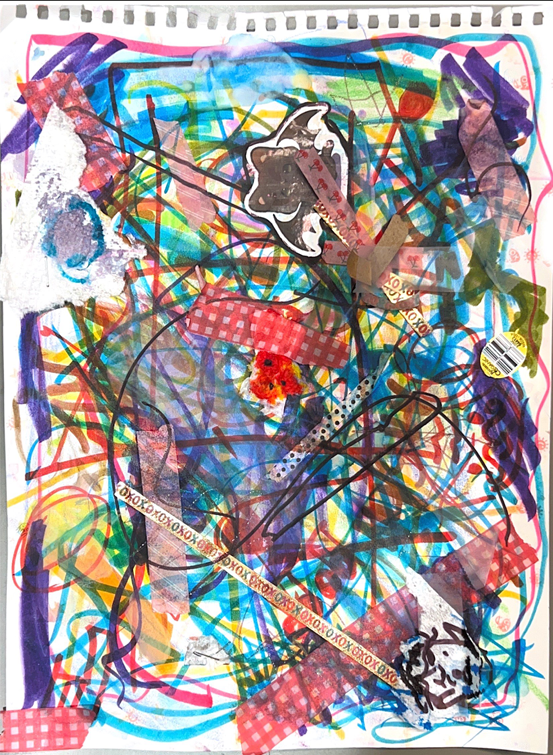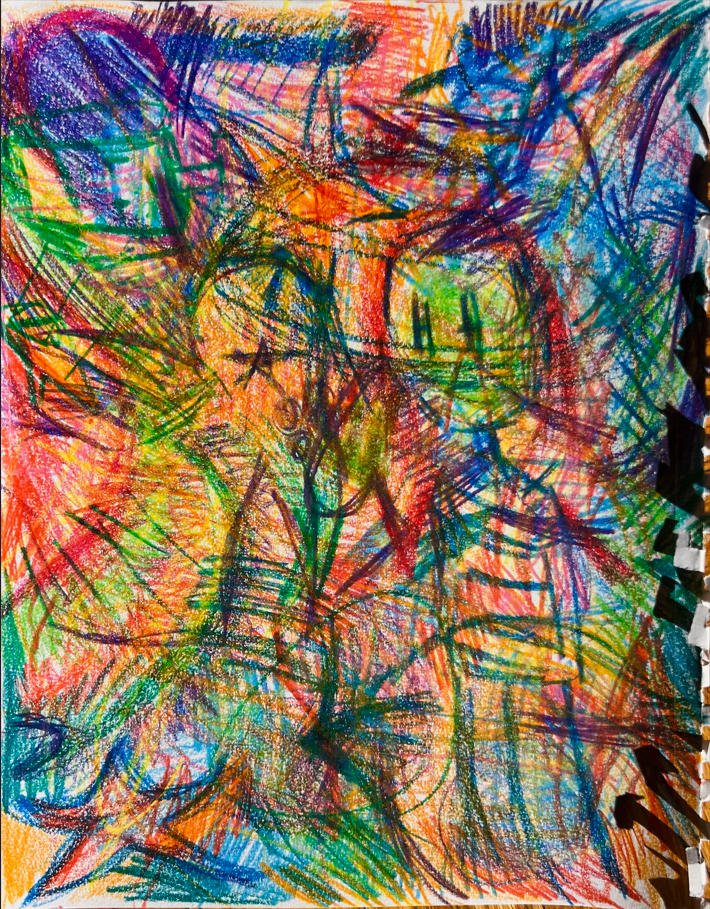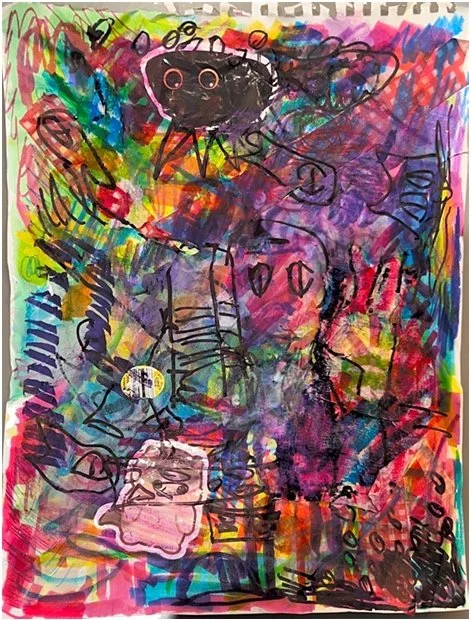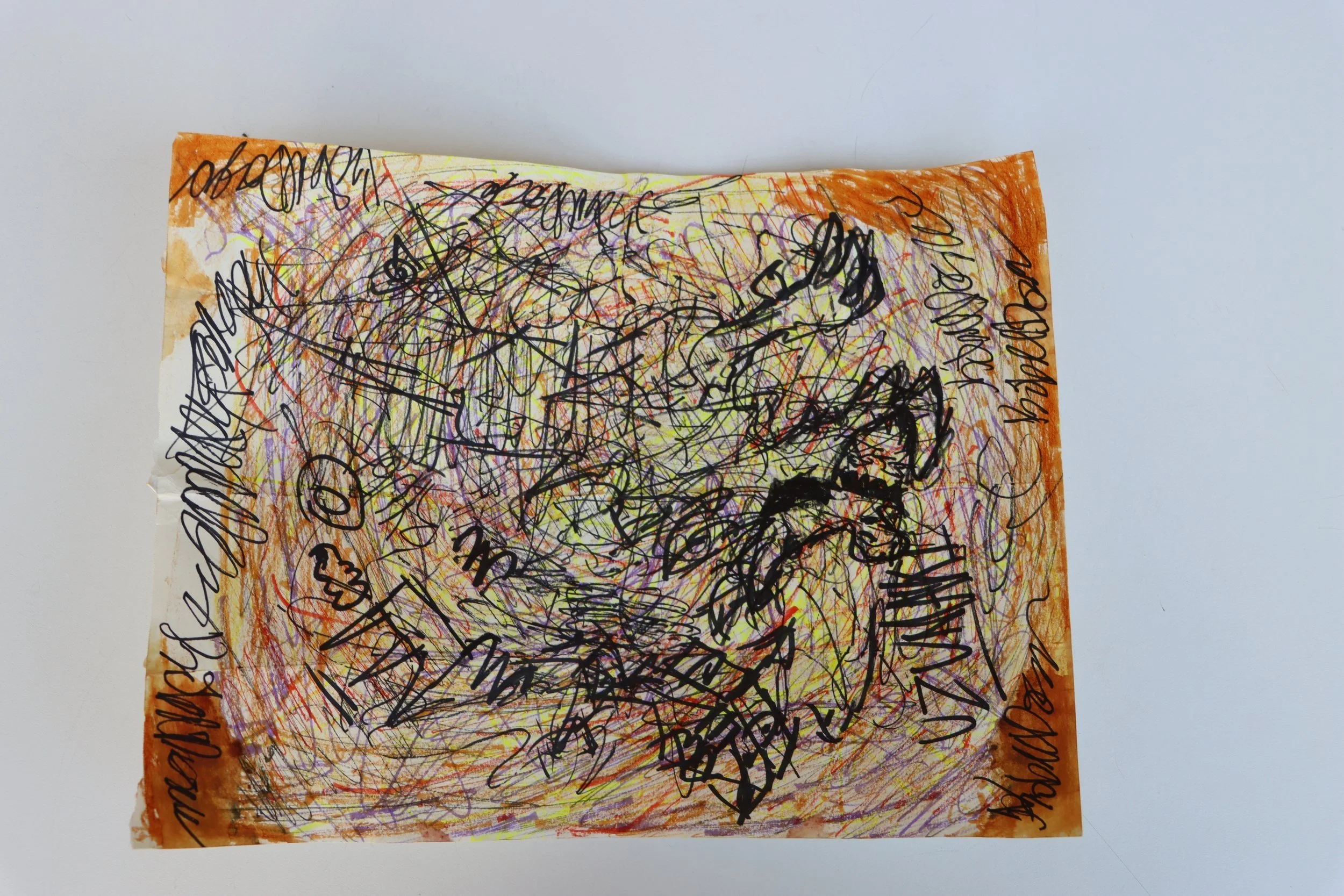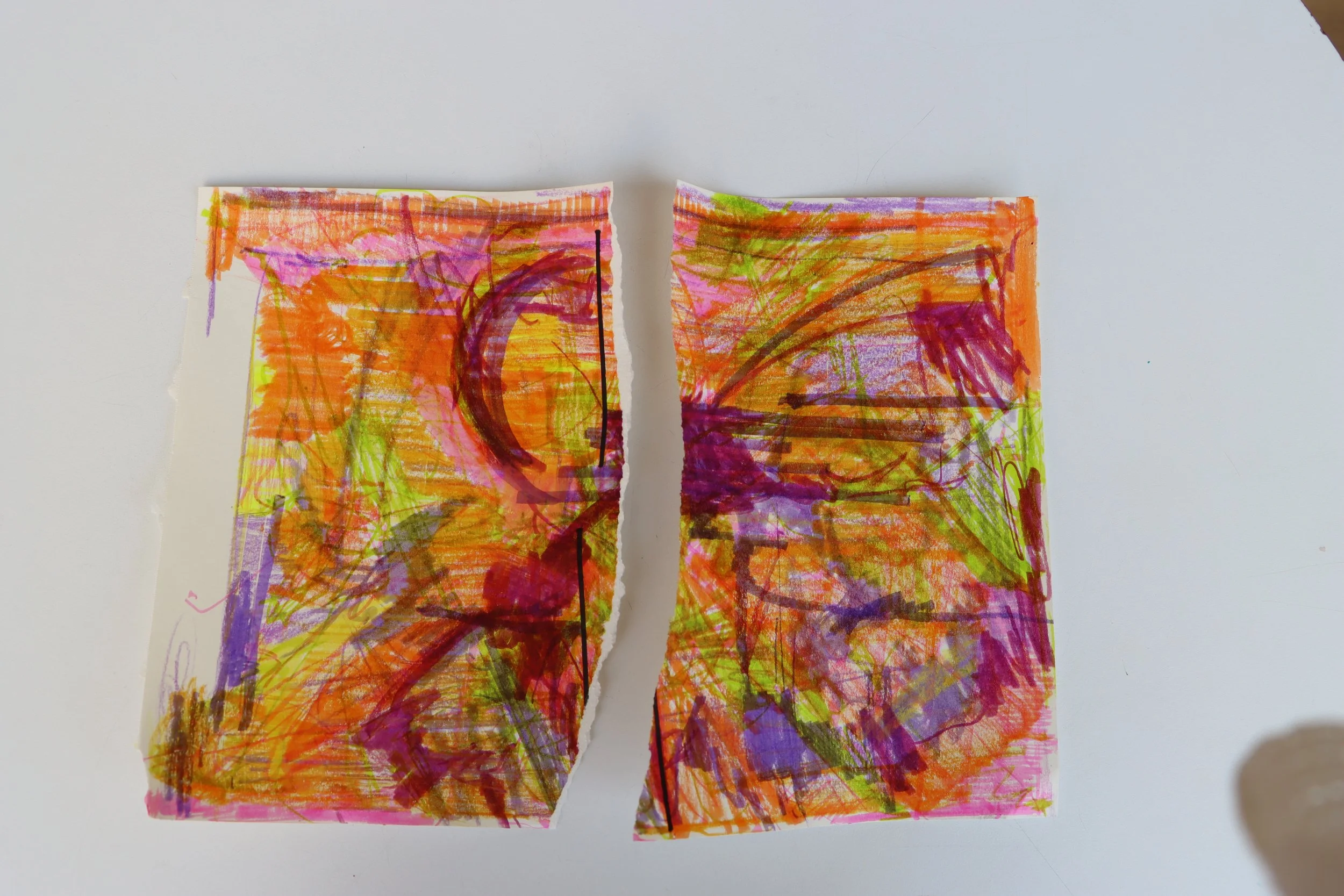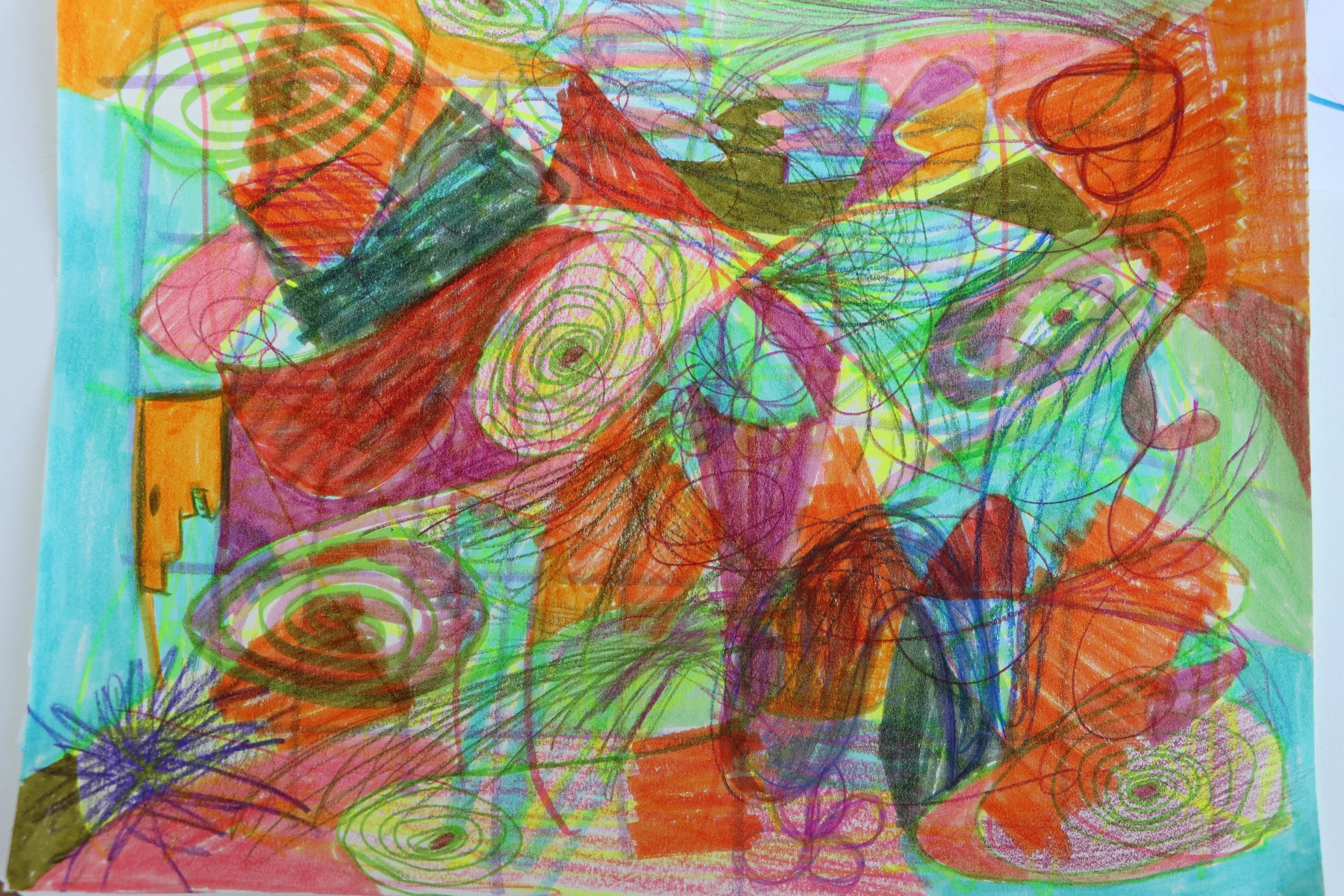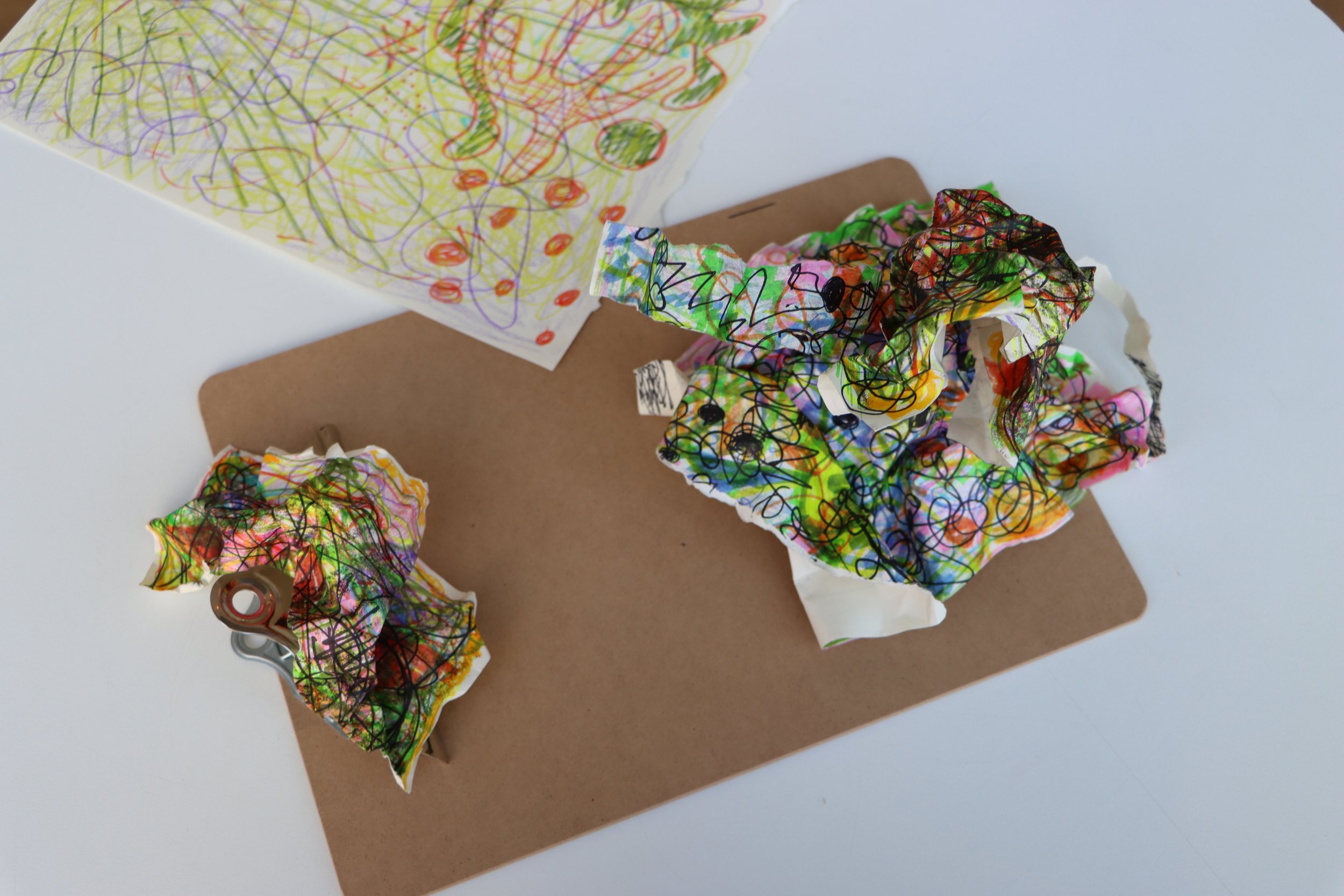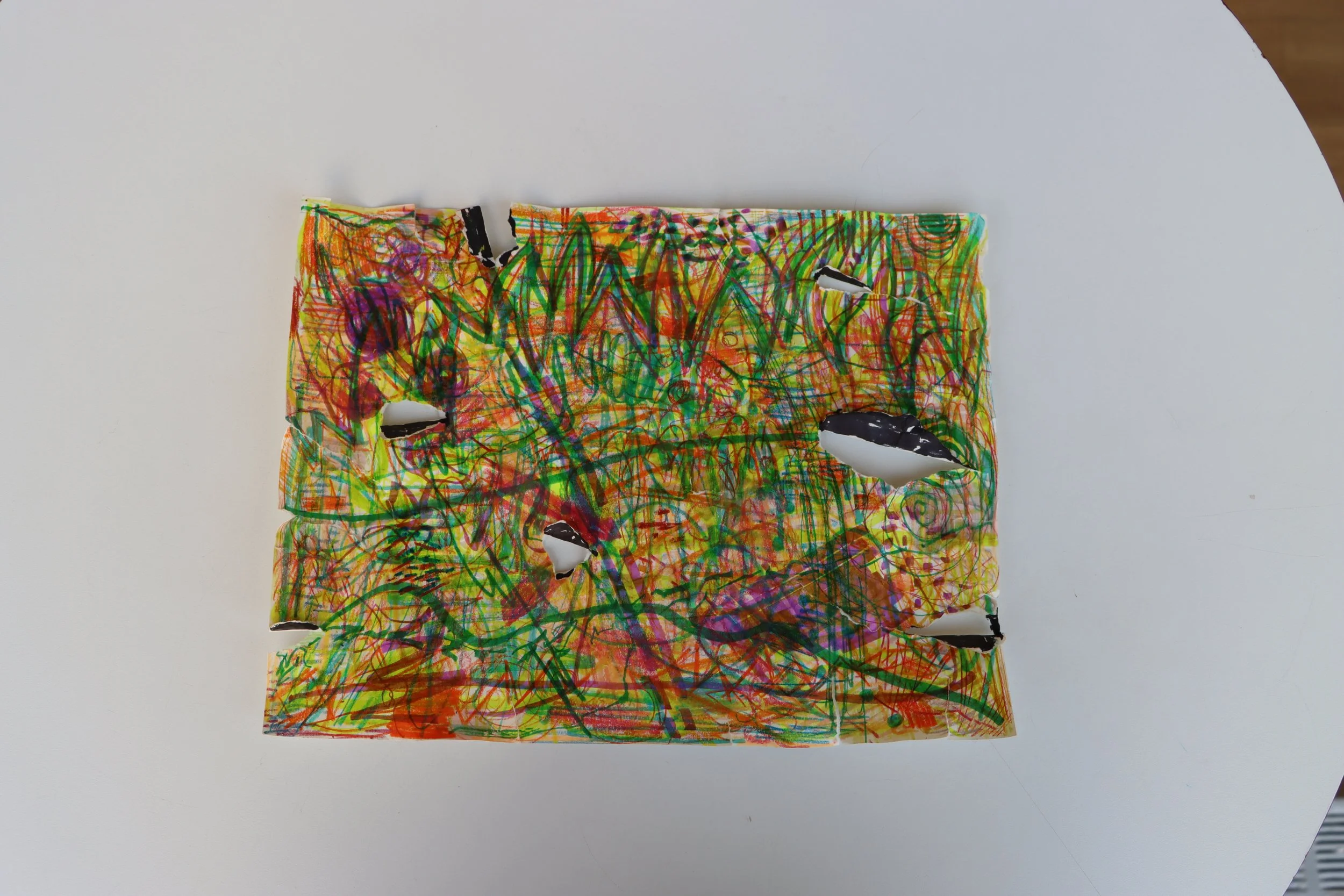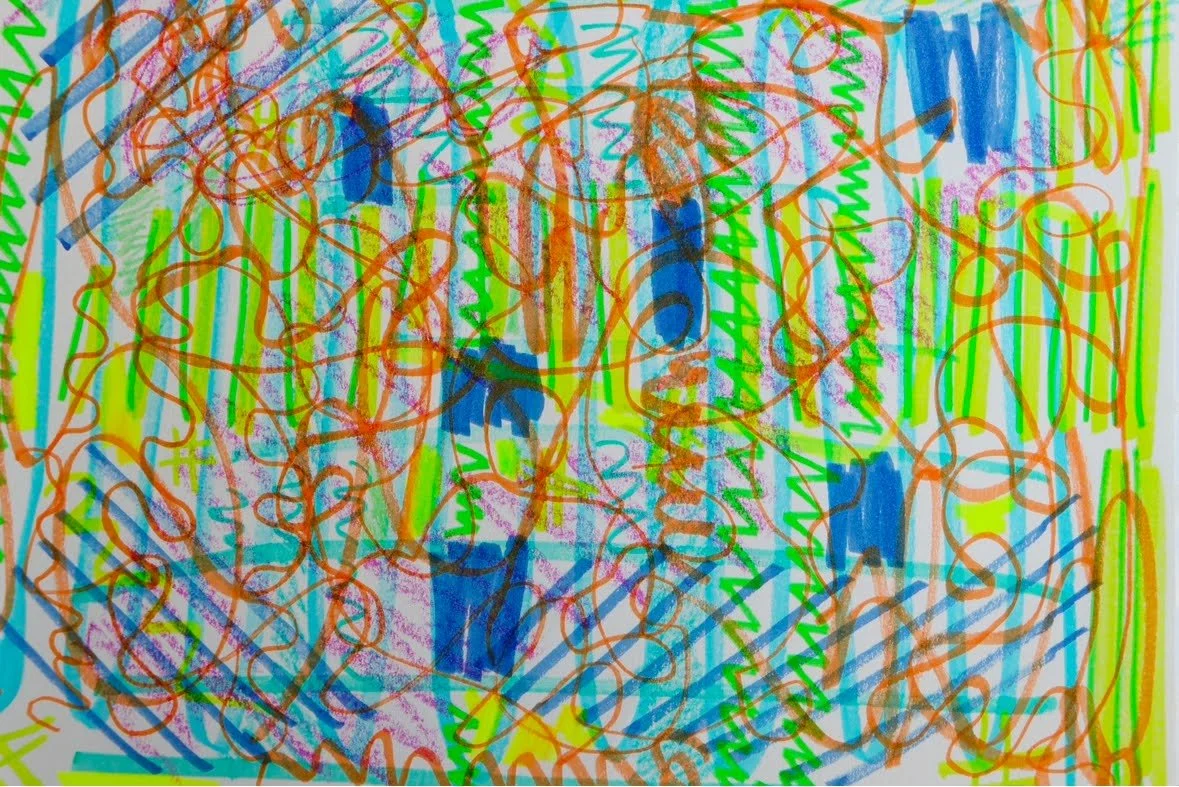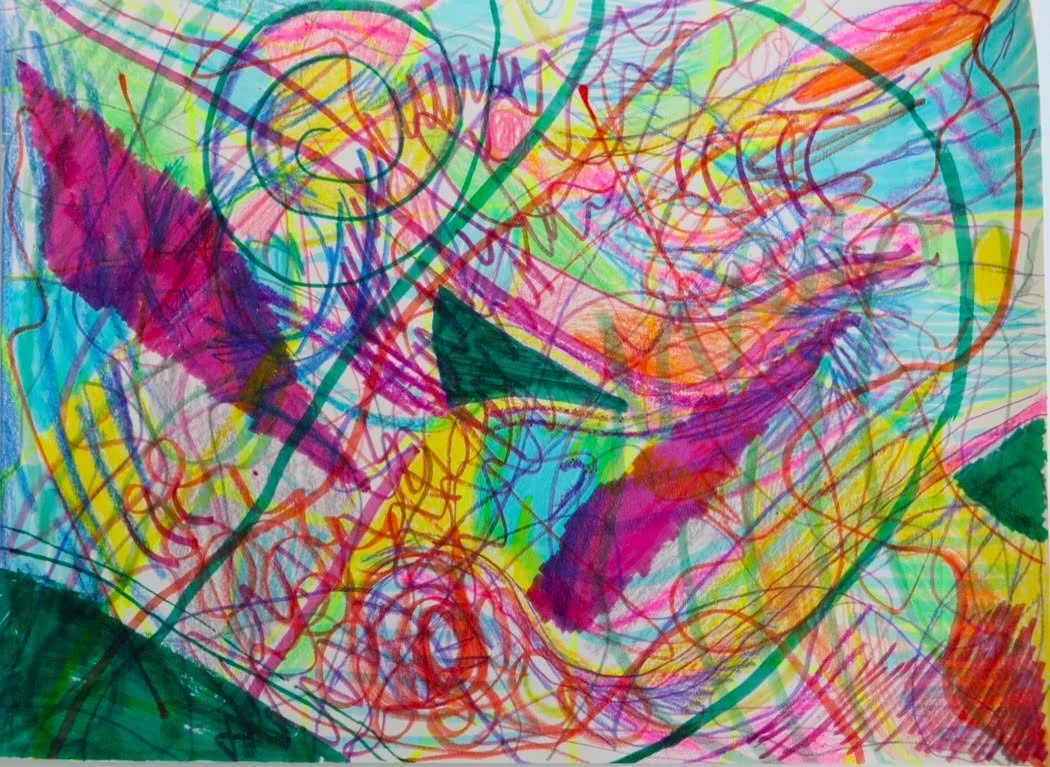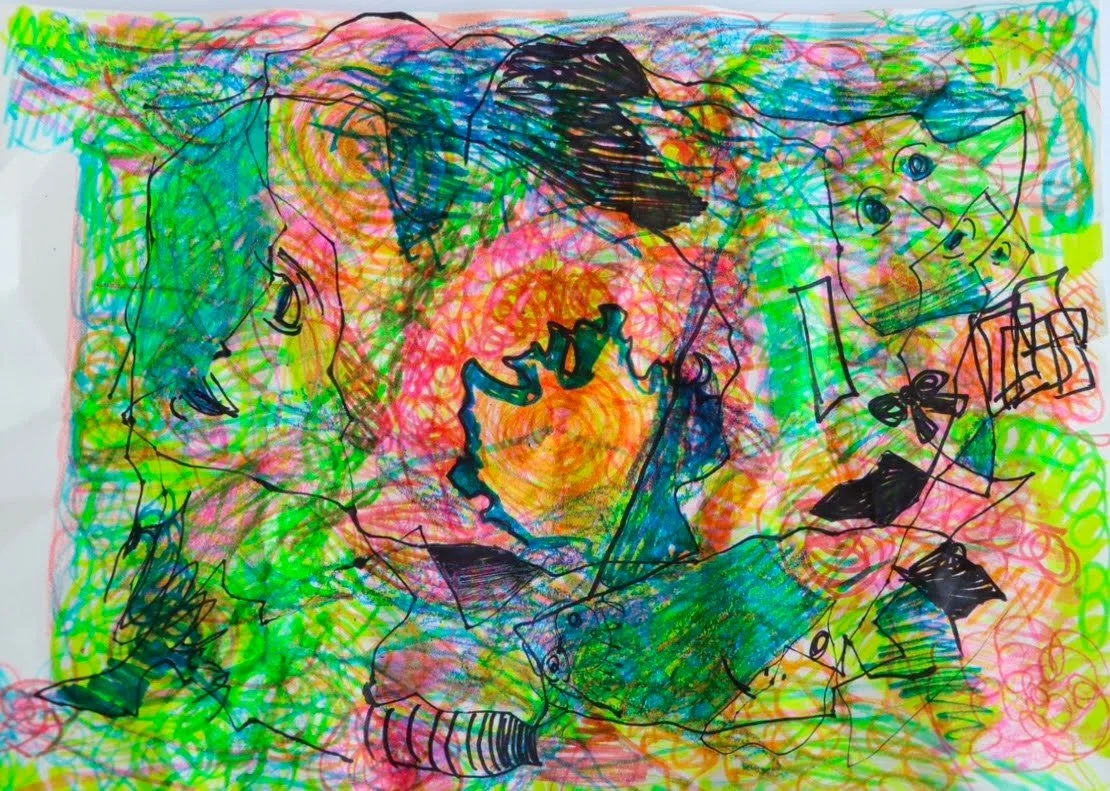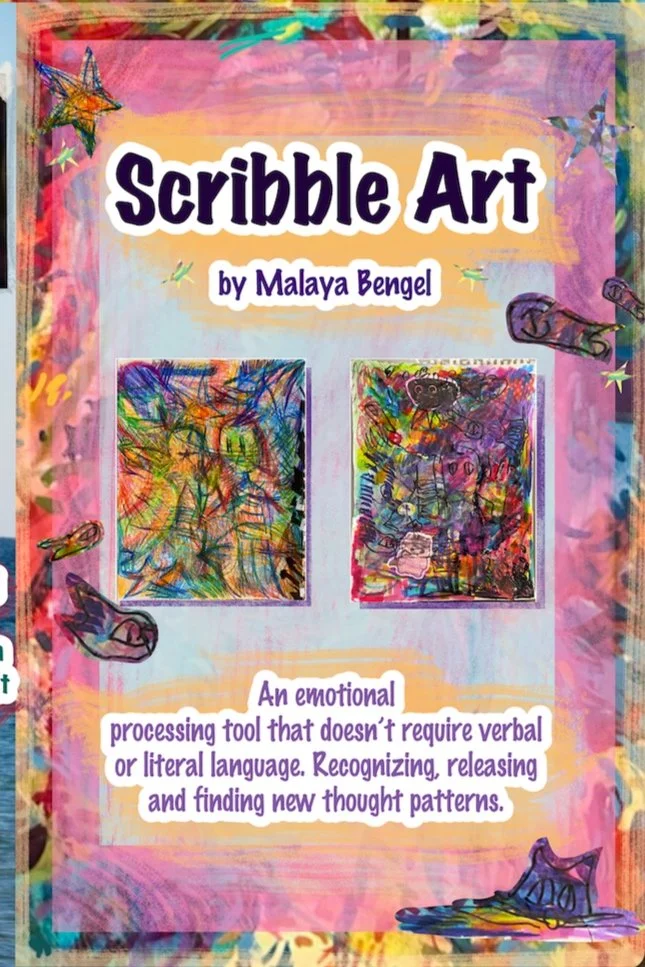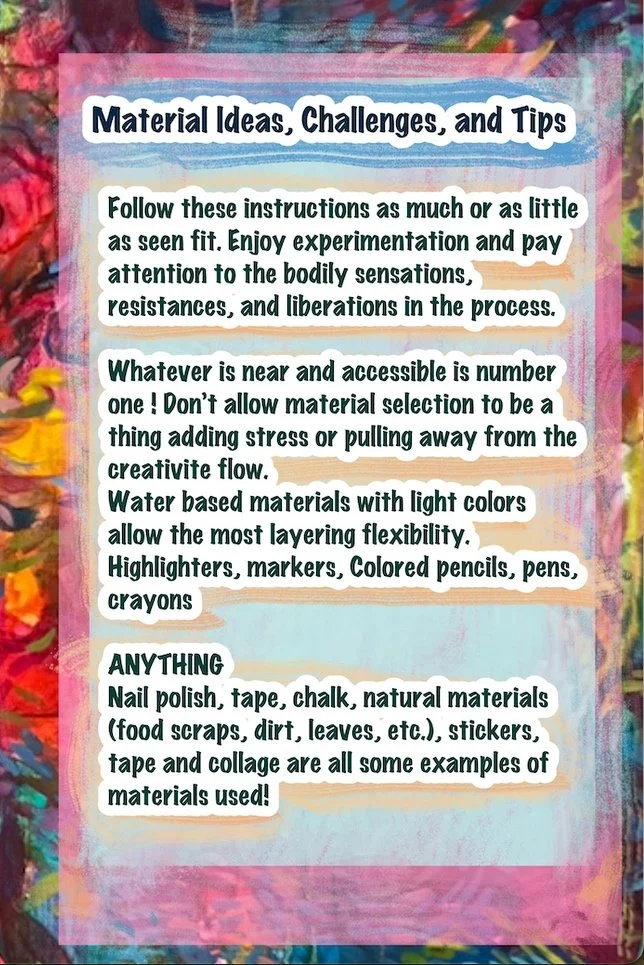
An art wellness workshop and theory
Scribble Art
What is it?
Scribble Art is an art wellness workshop and theory I have been developing for over three years, mainly while at The New School. I identify this work as ‘autonomous creative practice support.’ This means highlighting a nonlinear and ongoing approach to creative practices, and a nuanced relationship to our voices. A cycle of detachment-risk-discovery leads the practice. How can we become aware of our thought patterns, our grips to them, and release to try a new path? The Scribble Art method structures multiple moments of challenging traditional approaches and encouraging experimentation. This is found in a continual turning of the drawing surface which detaches the conscious from set compositions. Scribble Art also emphasizes bodily and present awareness through the process of creation, rather than a dettached striving towards an idea of an image, or performance of drawing. Accessibility is woven into every stage of Scribble Art’s creation and execution. I am particularly focused on making the workshop accessible to neurodivergent communities, specifically neurodivergent, and ‘non-art’ folks, or those outside of traditional art training. Scribble Art focuses on unconventional creative practice development but also functions as an emotional processing and grounding mechanism. A part of my initial use for Scribble Art was to take care of myself through anxiety or panic attacks. With this in mind, the instructions and tools for Scribble Art are minimal and focused on what is near and affordable, allowing access to the benefits while in an intense mental state. The simple instructions support access to those without an understanding of ‘art talk’ or techniques, but also creates a situation for all participants to make decisions that build to artistic voice, style, and discernment.
Scribble Art balances individual and communal development in the workshop format. Individual flow states, collective learning, and a focus on experience are understood through the small group. At the end of the workshop we have a brief written reflection and share (if comfortable) with the group. This is such a fulfilling and validating time. We can explore how unconventional modes of creativity and understanding can foster deep connection and community.
How does it work?
Instructions
These instructions are meant to followed or disobeyed as much as you see fit. Experiment and find what works for you!
Begin by using a broadly tipped tool. I recommend a water based marker. Make a large mark across the surface of the page.
Turn the page! and make another mark.
Repeat steps 1-2 and as the surface of the page begins to fill feel free to introduce other forms of mark-making. (shapes, swatches, squiggles, words, etc.)
Once the page is mostly full of marks, feel free to slow your. Look for new opportunities, take risks, and evaluate how the results make you feel.
Build layers and textures with multi-media tools this is a great time to switch to smaller tipped tools such as pens, pencils, and crayons. Pay attention to the layering of multiple mediums. What mediums resist layering? Such as a waxy crayon. Whereas which mediums welcome layering, like a highlighter.
Remember to continue turning!
For added detachment, risk, and discovery try taking the two dimensional work to 3D! Students have had great release by crumpling or tearing their drawing. Others have created sculptures or paper airplanes with their work.
When your work is complete I encourage two mindfulness exercises. First scribble on a cheap piece of paper for five minutes. Empty out all the energy left in your body. Switch between dominant and non-dominant hands to increase awareness. Next write for five minutes reflections on the Scribble Art experience. Broken sentences and handfuls of disconnected words can prove incredibly valuable. If creating with others, share!
curriculum brief
movement, bodily awareness. turning. detachment, risk, discovery.

Student Work

Scribble Art Zine
